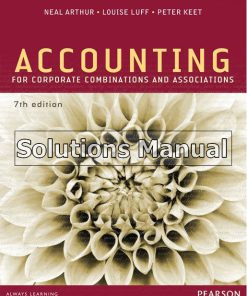1.1 What is a digital filter?
The analog circuit analysis
A digital filter replacement
1.2 Overview of Analysis and Design
The Analysis Process
The Design Process
CHAPTER 2 Discrete-Time Signals
2.0 Introduction
2.1 Discrete-Time Signals and Systems
Unit Impulse and Unit Step Functions
Related operations
2.2 Transformations of Discrete-Time Signals
Time Transformations
Amplitude Transformations
2.3 Characteristics of Discrete-Time Signals
Even and Odd Signals
Signals Periodic in n
Signals Periodic in &
2.4 Common Discrete-Time Signals
2.5 Discrete-Time Systems
2.6 Convolution for Discrete-Time Systems
Impulse representation of discrete-time signals
Convolution
Properties of convolution
Power gain
Chapter Summary
CHAPTER 3 Frequency Domain Concepts
3.0 Introduction
3.1 Orthogonal Functions and Fourier Series
The Exponential Fourier Series
Discrete Fourier Series
3.2 The Fourier Transform
Definition of the Fourier Transform
Properties of the Fourier Transform
Fourier Transforms of Periodic Functions
3.3 The Discrete-Time Fourier Transform
The Discrete-Time Fourier Transform (DTFT)
Properties of the Discrete-Time Fourier Transform
Discrete-Time Fourier Transforms of Periodic Sequences
3.4 Discrete Fourier Transform
Shorthand Notation for the DFT
Frequency resolution of the DFT
3.5 Fast Fourier Transform
Decomposition-in-Time Fast Fourier Transform Algorithm
Applications of the Discrete / Fast Fourier Transform
Calculation of Fourier Transforms
Convolution Calculations with the DFT/FFT
Linear Convolution with the DFT
Computational Efficiency
3.6 The Laplace Transform
Properties of the Laplace transform
Transfer functions
Frequency response of continuous-time LTI systems
3.7 The z-Transform
Definitions of z-Transforms
z-Transforms
Regions of Convergence
Inverse z-Transforms
z-Transform Properties
LTI System Applications
Transfer Functions
Causality
Stability
Invertibility
Discrete-Time Fourier Transform–z-transform Relationship
Frequency Response Calculation
Chapter Summary
Chapter 4 Sampling and Reconstruction
4.1 Sampling Continuous-Time Signals
Impulse Sampling
Shannon’s sampling theorem
Practical sampling
4.2 Anti-aliasing Filters
Low pass analog Butterworth filters
A low pass Butterworth analog filter has a transfer function given by Switched-capacitor filters
Oversampling
4.3 The Sampling Process
Errors in the sampling process
4.4 Analog to Digital Conversion
Conversion techniques
Successive Approximation Converter
Flash Converter
Sigma-Delta Conversion
Error in A/D conversion process
Dither
4.5 Digital to Analog Conversion
D/A conversion techniques
4.6 Anti-Imaging Filters
Chapter 5 FIR Filter Design and Analysis
5.1 Filter Specifications
5.2 Fundamentals of FIR Filter Design
Linear phase and FIR filters
Conditions for linear phase in FIR filters
Restrictions Imposed by Symmetry
Window Functions and FIR Filters
High pass, band pass, and band stop filters
5.3 Advanced Window Functions
Kaiser Window
Dolph-Chebyshev window
5.4 Frequency Sampling FIR filters
5.5 The Parks-McClellan Design Technique for FIR filters
5.6 Minimum Phase FIR filters
5.7 Applications
Moving Average FIR Filter
Comb Filters
Differentiators
Hilbert Transformers
5.8 Summary of FIR Characteristics
Chapter 6 Analysis and Design of IIR Filters
6.1 Fundamental IIR design Using the Bilinear Transform
Example 6.1
6.2 Stability of IIR Filters
6.3 Frequency transformations
6.4 Classic IIR filters
The Butterworth Filter
Chebyshev Filters
Inverse Chebyshev filter
Elliptic Filters
Summary of Classic IIR Filters
Invariant Impulse Response
6.5 Poles and Zeros in the z-Plane for IIR Filters
Summary of pole and zero locations for IIR filters
6.6 Direct Design of IIR Filters
Design by pole/zero placement
Design of resonators and notch filters of second order
Numerical Direct Design — Pade method
Numerical Direct Design — Prony’s method
Numerical Direct Design — Yule-Walker method
6.7 Applications of IIR Filters
All Pass Filters
IIR Moving Average Filters
IIR Comb Filters
Inverse Filters
Chapter Summary
Chapter 7 Sample Rate Conversion
7.1 Integer Decimation
Frequency spectrum of the down sampled signal
Cascaded Decimation
7.2 Integer Interpolation
Cascaded Interpolators
7.3 Conversion by a Rational Factor
7.4 FIR Implementation
Decimation filters
Interpolation filters
7.5 Narrow Band Filters
7.6 Conversion by an Arbitrary Factor
Hold interpolation
Linear Interpolation
7.7 Bandpass Sampling
7.8 Oversampling in Audio Applications
Chapter Summary
Chapter 8 Realization and Implementation of Digital Filters
8.1 Implementation Issues
8.2 Number Representation
Two’s Complement
Sign/Magnitude
Floating point representation
8.3 Realization Structures
FIR Structures
IIR Structures
State Space Representation
8.4 Coefficient Quantization Error
8.5 Output Error due to Input Quantization
8.6 Product Quantization
8.7 Quantization and Dithering
8.8 Overflow and Scaling
8.9 Limit Cycles
8.10 DSP on Microcontrollers
Microcontroller Characteristics for DSP
Implementation in C
FIR Implementation in C
IIR Implementation in C
Speed optimization
Chapter 9 Digital Audio Signals
9.1 The Nature of Audio Signals
9.2 Audio File Coding
Pulse Code Modulation
Differential Pulse Code Modulation
9.3 Audio File Formats
Lossless file format examples
Lossless compressed format examples
Lossy compressed format examples
9.4 Audio Effects
Oscillators and signal generation
Delay
Flanging
Chorus
Tremolo and Vibrato
Reverberation
The Doppler Effect
Equalizers
Chapter Summary
Chapter 10 Introduction to Two-Dimensional Digital Signal Processing
10.1 Representation of Two-Dimensional Signals
Properties of Two-Dimensional Difference Equations
10.2 Two-Dimensional Transforms
The Z-Transform in Two Dimensions
The two-dimensional Discrete Fourier Transform
Properties of the 2D DFT
The Two Dimensional DFT and Convolution
The Two-Dimensional DFT and Optics
The Discrete Cosine Transform in Two Dimensions
10.3 Two-Dimensional FIR Filters
Window method
Frequency Sampling in Two-Dimensions
Transform methods
Applying FIR Filters to Images
Chapter Summary
Chapter 11 Introduction to Wavelets
11.1 Overview
11.2 The Short Term Fourier Transform
11.3 Wavelets and the Continuous Wavelet Transform
The HAAR Wavelet
The Daubechies Wavelet
Other Wavelet Families
11.4 Interpretation of the Wavelet Transform Data
11.5 The Undecimated Discrete Wavelet Transform
11.6 The Discrete Wavelet Transform
Chapter Summary
APPENDIX A Analog Filter Design
A.1 Analog Butterworth Filters
A.2 Analog Chebyschev Filters
A.3 Analog Inverse Chebyschev Filters
A.4 Analog Elliptic Filters
A.5 Summary of analog filter characteristics
APPENDIX B Bibliography
APPENDIX C Background Mathematics
C.1. Summation Formulas for Geometric Series
C.2. Euler’s Relation
C.3. Inverse Bilateral Z-Transforms by Partial Fraction Expansion
C.4. Matrix Algebra
C.5 State Variable Equations
APPENDIX D MATLAB® User Functions and Commands
D.1. MATLAB User Functions
D.2. MATLAB Commands













